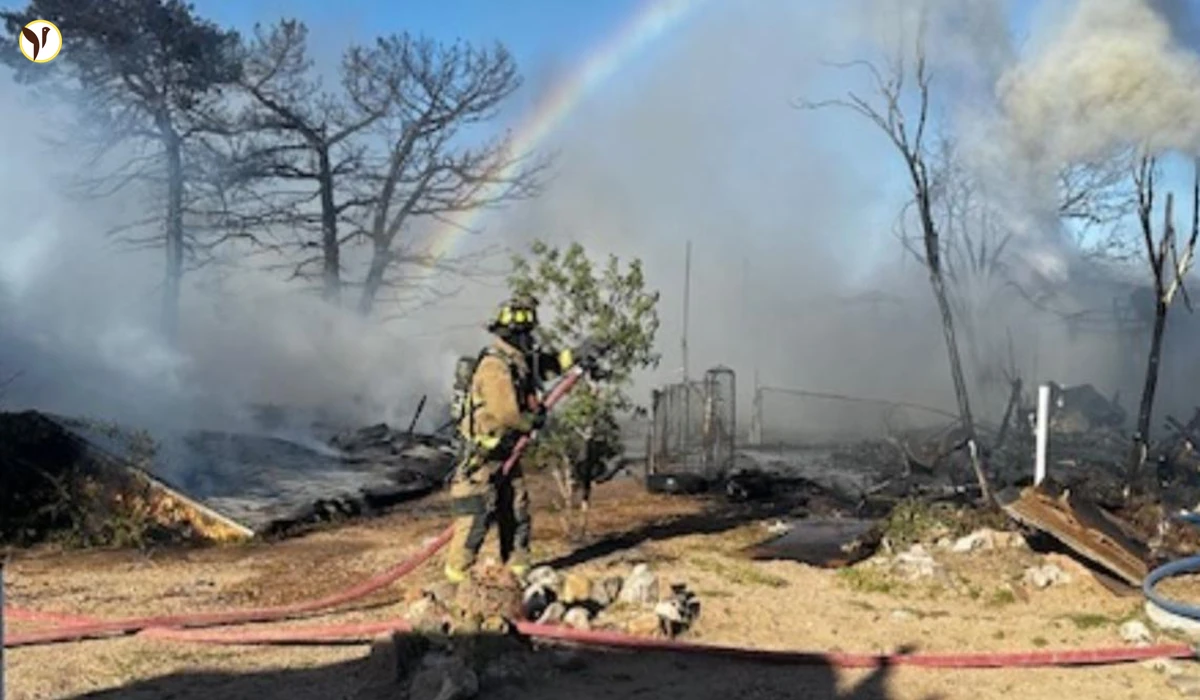Arizona Wildfires Rage: Greer Fire Sends Residents Fleeing
Ferocious winds whipped a wildfire into a monster near Greer, Arizona, on May 13th, 2025, forcing families from their homes and shutting down highways as flames devoured the landscape. What began as a small fire on private land quickly exploded into a thousands-acre inferno, becoming the first major crisis of this year's wildfire season in Arizona.
Community in Crisis
As smoke darkened the sky, South Fork residents grabbed what they could and fled to Eagar and Springerville, many leaving prized possessions behind. The power grid failed as the fire approached Greer, leaving the community in darkness as evacuation orders blared.
"We had maybe 20 minutes to decide what mattered most," said Lisa Hernandez, who evacuated with her three children and elderly mother. "The kids were crying, asking if our house would burn down. What do you tell them?"
Heart-stopping images flooded social media as the blaze advanced. The Town of Eagar pleaded with residents to stick to official information sources amid growing panic and misinformation. "Please remain calm but act quickly," urged the Northeastern Arizona Public Information System as they ordered immediate evacuation for anyone within a mile of the fire's path.
-
Evacuations: Hundreds fled their homes, creating a wave of displaced families in Eagar/Springerville shelters.
-
Structures Lost: Several homes and cabins couldn't be saved, leaving families wondering if they'll have anything to return to.
-
Highway Closure: Highway 260 was shut down, cutting off a vital escape route and complicating emergency response.
By nightfall, the Arizona Department of Forestry and Fire Management confirmed the fire had torn through more than 3,500 acres. The relentless winds—gusting up to 65 mph—grounded firefighting aircraft and pushed flames in unpredictable directions. Fire crews battled exhaustion as they worked to establish containment lines in nearly impossible conditions.
Meanwhile, about 200 miles away, another community faced its own fire emergency. In Kingman, flames damaged at least five structures near Arnold and Sierra roads, leaving four families homeless. Investigators are still looking into what sparked the Kingman blaze.
Through a Veteran's Eyes
Jerry Porter has lived through this nightmare before. The longtime Eagar resident survived both the devastating Rodeo-Chediski and Wallow Fires, each time watching his community reel from nature's fury.
"I stepped outside and knew immediately this was bad," Porter told me, his voice gravelly with emotion. "The smoke column was this angry dark color, and I swear you could feel the fire's hunger in the air."
Porter described watching in disbelief as the smoke plume exploded in size.
"It tripled in size in about ten minutes," he said, shaking his head. "One minute you're looking at something manageable, the next it's this monster breathing down your neck." The wind, he explained, was the game-changer. "It's hard to even walk right now, the wind is so strong. Can you imagine trying to fight a fire in this?"
Despite evacuating twice before, Porter says it never gets easier. "You stand there trying to decide—what can't I live without? What might I never see again? Nobody should have to make those choices."
His parting words were for those in the fire's path: "Keep your loved ones close. Pray the winds die down. And remember, homes can be rebuilt—people can't be replaced."
Are You Ready for Wildfire Season?
The Greer Fire is a painful reminder that when it comes to Arizona wildfires, it's not a question of if, but when. Have you thought about what you'd grab if you had just minutes to evacuate?
The National Fire Protection Association (NFPA) emphasizes that preparation shouldn't start when you smell smoke. Having emergency supplies ready to go can make all the difference in those frantic moments when every second counts.
What should be in your wildfire go-kit?
-
Three gallons of water per person (think about it—that's survival for three days)
-
Three-day supply of ready-to-eat food (forget about cooking when you're displaced)
-
First-aid kit (accidents happen, especially during evacuations)
-
Medications (keep a week's supply ready to grab)
-
Copies of important documents (try keeping digital backups too)
-
Warm blankets (shelter might be basic)
-
Battery-powered radio (when cell networks fail, radio keeps working)
"The five minutes you spend gathering supplies during an emergency will never be enough," says Carlos Martinez, a wildfire preparedness specialist. "The families who fare best are those who packed their kits weeks or months before they needed them."
Want a complete checklist? The NFPA offers one online that covers everything from pet supplies to comfort items for children. With fires already burning in May—earlier than usual—this season could be particularly challenging for Arizona communities.
When the Smoke Clears
The Greer Fire is still writing its story across the Arizona landscape. For the families watching from evacuation centers, wondering if their homes still stand, the waiting is excruciating.
Jerry Porter's experience speaks volumes about living in wildfire country. Having a plan and being ready to move quickly isn't paranoia—it's prudence. As climate patterns shift and Arizona's forests grow increasingly vulnerable to fire, communities are learning that preparation isn't optional.
When evacuation orders come—and they will come somewhere in Arizona this summer—the question won't be whether you should leave, but how quickly you can get out the door with what matters most. The answer might just determine how well you weather the crisis ahead.


/content/stories/thumb/thumb691c49335a4bc3.80041055.webp)
/content/stories/thumb/thumb691c3c61988637.81812691.webp)
/content/stories/thumb/thumb691c2288109e71.34074074.webp)
/content/stories/thumb/thumb691c10b6de0057.94938064.webp)
/content/stories/thumb/thumb691c06b04ffbd2.50298709.webp)


